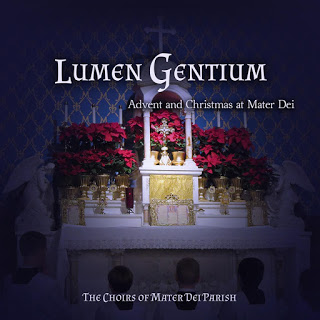This is the second tutorial in a series on how to read Gregorian Chant Notation. Please review the introductory post, if you missed it. In this tutorial, we will delve into solfege and with it a discussion of intervals.
What is Solfege?
Solfege is a system for naming pitches to aid in reading and singing them aloud. Originally taken from the first syllables of a hymn to St. John the Baptist, each solfege syllable corresponds to a note in the scale. (If you are interested in the history of solfege, start with this wikipedia article.)
The Major and Minor Scales
The scale is comprised of eight notes where the first and eighth notes are an octave apart. For the purposes of Gregorian chant, the scale may be either major or natural minor. (Harmonic and melodic minor scales will not be encountered.) Let’s start with the major scale, whose relative pitch spacings are as follows:
Whole-Whole-Half-Whole-Whole-Whole-Half
which is to say that between the first and second note, there is a “distance” of a whole step (a major second); between the second and third, there is also the distance of a whole step; but between the third and fourth notes and between the seventh and eighth notes, there is only a half step (minor second). This pattern of steps produces the major scale, whose corresponding solfege syllables are:
Do Re Mi Fa Sol La Ti Do
Put differently, between Do and Re is a whole step. Between Re and Mi is a whole step. Between Mi and Fa is a half step. Between Fa and Sol is a whole step. Between Sol and La is a whole step. Between La and Ti is a whole step, and between Ti and Do is a half step.
For the minor scale, the relative pitch spacings are:
Whole-Half-Whole-Whole-Half-Whole-Whole
Note that the distance between the solfege syllables remain the same, but for the minor scale we start with La rather than Do:
La Ti Do Re Mi Fa Sol La
Intervals
We’ve already introduced two intervals by parenthetical reference: the major second (M2) and minor second (m2), and we have said that they correspond to the whole step and half step, respectively. If two notes are contiguous, they will either be an interval of a M2 or m2 apart. An interval is a notion of the distance between notes. For the purposes of chant, the intervals range from a minor second to a perfect octave (P8). (We’ll discuss what “perfect” means in this context later).
Not every melody consists of contiguous notes (stepwise motion). Often, there are gaps between notes on the staff lines. Gaps indicate an interval of a 3rd or more. How can you tell how great is this interval? Start at the first note and count it as 1. Then count the number of lines and spaces until you come to the next note. Be sure to include the final note. That will tell you if you are dealing with an interval of a second, third, fourth, fifth, sixth, seventh, or octave. (If the ending note is the same as the starting note–you count only to 1–this is an interval of a unison, which means there is no change in pitch.)
Once you have the numerical part of the interval (2, 3, 4, etc.) you also need to determine if the interval is major, minor, or perfect. In order to understand perfect, let’s start with major and minor intervals.
A major interval contains the maximum number of whole steps possible for the interval. For example, a major third has a distance of two whole steps. Examples include Do-Mi, Fa-La, and Sol-Ti. A minor interval has one fewer whole steps than its major counterpart. A minor third, for example has one whole step and one half step. Examples include La-Do, Ti-Re, Re-Fa, and Mi-Sol. Perfect intervals are those for which every jump of that number along the scale has the same number of whole and half steps. The perfect intervals are the unison, fourth, fifth, and octave.
I must make a note about the interval known as the tritone. This interval consists of three whole steps (Fa-Ti). The tritone looks like a fourth (and would seem to contradict the above definition of a perfect interval I gave above). I have only ever encountered this interval in chant one time and only in going from the end of a responsory verse back to the beginning. Here is an additional reference for the tritone, the so-called Devil’s Interval.
The vast majority of intervals you will encounter in chant are the unison, second, third, fourth, and fifth. Sixths are rare, and you will probably not encounter a seventh interval at all.
Triads
Triads are two intervals of a third stacked above each other. Triads define a chord. While chant is sung in unison, you will occasionally run into broken chords, which consist of one note of a triad followed by another. Thus, it is good to learn three kinds of triads, so you can hear them as you sing.
The major triad (Do-Mi-Sol) is a major third (Do-Mi) followed by a minor third (Mi-Sol) if you are ascending, and the opposite if you are descending.
The minor triad (La-Do-Mi) is a minor third (La-Do) followed by a major third (Do-Mi) if you are ascending, and the opposite if you are descending.
Finally, the diminished triad (and you do run into these in chant) is a minor third (Ti-Re) followed by a minor third (Re-Fa), which is the same descending as ascending.
Why Use Solfege?
It can be challenging, if not confusing for a beginner to solfege-sing a chant line. Admittedly, it takes practice to do it well and consistently. Nevertheless, it truly is a skill to foster because it will help you read better without having to rely on other voices.
For example, many mode 1 and 2 chants begin with Re-Fa. It may not be easy to hear in one’s mind the minor third, but if one is familiar with hearing and singing Re-Fa, you have the minor third right there.
Example Chant
After a few tries and some Audacity cut and paste, I was able to solfege the example piece from the first post, Beatus Vir. It is given here again. Observe that the Do clef is on the top line, so going down from there to the first note (Do-Ti-La-Sol) puts the first note on Sol. Follow along with the sung solfege below.
A Few Intervals
As a practical matter, let’s see if we can identify some intervals and triads in the example piece. We have stepwise motion through the intonation. In fact, all of the steps are major seconds. At the word “qui” in “qui timet” we have a P4 jump up from Sol to Do. In “timet”, we have a P4 jump down from Re to La. At “Do” of “Dominum” we have a minor third up from La to Do (again at “mi” of Dominum). In “num” of “Dominum” we have a P4 jump from Do down to La followed a little later by a P4 jump up from Sol to Do, a minor third down from Do to La and back to Do, and finally a P4 down from Do to Sol.
When we come to “in mandatis”, we have a major third (Fa-La) followed by a minor third (La-Do). This is a major triad.
Finally, note on the third line how the flat affects the intervals with alternating Ti and Te.
Conclusion
That’s about all for this tutorial. I’d recommend you search for some solfege exercises to get started hearing and singing intervals you encounter frequently in chant (Seconds through Fifths, especially). It can be a helpful aid also to come up with little songs for the intervals. For example, Brahms’ Lullaby opens with the minor third (both up and down). The perfect fourth up is “Here comes the bride”. Sometimes simple mnemonics can help ingrain the intervals more easily.






2 thoughts on “Gregorian Chant Notation: Solfege”